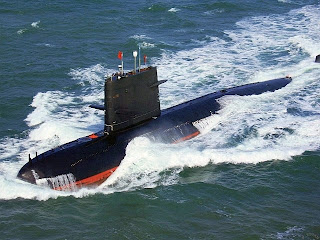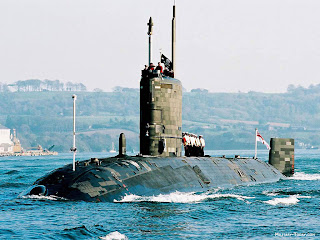1. Palenque (Mexico)
Machu Picchu (Old Mountain) is the location of the pre-Columbian Inca ruins located in the mountains at an altitude of about 2350 m. Machu Picchu is located above the Urubamba Valley in Peru, about 70 km northwest of Cusco. This site was forgotten by the international community, but not by the local community. This site re-discovered by Yale archaeologist Hiram Bingham III university who discovered it in 1911.
Ancient Egyptian civilization evolved for more than three and a half centuries. Starting with the initial unification groups that exist in the Nile Valley around 3150 BC, this civilization is traditionally considered an end in about 31 BC, during the early Roman Empire conquered and absorbed the Egyptian Ptolemy as part of the Roman province. While this is not the first foreign occupation of Egypt, the period of Roman rule led to a political and religious changes gradually in the Nile Valley, effectively marking the end of development of the independent Egyptian civilization.
Petra is a city founded by former mPalmyra important city in Syria, located in an oasis 215 km northeast of Damascus. Formerly known by name of Tadmor (bhs Arabic). The city used to be located close to the hot springs, Afga, and is an ideal haven for the group of castaways from Iraq - Al-Sham (skrng Syria, Lebanon, the Holy Land, Jordan). Strategic location made Palmyra who became famous and prosperous empire in the 2nd century BC era.
Palenque is a Mayan heritage city which is located at the foot of the mountain Tumbala, Chiapas, Mexico. The historic town is not very big but it has buildings with beautiful architecture, statues, carvings that were made by the Mayans.
2. Pompeii (Italy)
Pompeii (Italy) is an ancient Roman city that was in ruins near the city of Naples and now in the Campania region, Italy. Pompeii was destroyed by the eruption of Mount Vesuvius in 79 AD Dust eruption of Vesuvius burying the town of Pompeii with everything in it as deep as several feet causing this city lost for 1,600 years before it was rediscovered by accident. Since then digging again this city gives a superb view detailed information on the life of a city in the heyday of the Roman Empire. Currently, the city of Pompeii is one of the UNESCO World Heritage Site.
3. Machu Picchu (Peru)
Machu Picchu (Old Mountain) is the location of the pre-Columbian Inca ruins located in the mountains at an altitude of about 2350 m. Machu Picchu is located above the Urubamba Valley in Peru, about 70 km northwest of Cusco. This site was forgotten by the international community, but not by the local community. This site re-discovered by Yale archaeologist Hiram Bingham III university who discovered it in 1911.
4. Angkor Wat (Kamboja)
Angkor is a series of locations in the capital of the Khmer Empire from the long period of the 9th century until the 15th century AD. Debris located in the forest and farmlands in the northern Great Lake Tonle Sap, near Siem Reap, Cambodia today, and is a UNESCO World Heritage Site. The temples at Angkor Wat, now largely restored, is part of the example of Khmer architecture.
5. Ancient Egypt
An ancient civilization in northeastern Africa. Civilization is centered along the mid to lower reaches of the Nile River which its power at about the 2nd century BC, during the period known as the New Kingdom. Region covers an area of the Nile Delta in the north, to the Jebel Barkal at the Fourth Cataract Nile. At some particular time, Egyptian civilization extends to the southern Levant, Eastern Desert, Red Sea coast, Semenajung Sinai and the Western Desert (focused on the several oases).
Ancient Egyptian civilization evolved for more than three and a half centuries. Starting with the initial unification groups that exist in the Nile Valley around 3150 BC, this civilization is traditionally considered an end in about 31 BC, during the early Roman Empire conquered and absorbed the Egyptian Ptolemy as part of the Roman province. While this is not the first foreign occupation of Egypt, the period of Roman rule led to a political and religious changes gradually in the Nile Valley, effectively marking the end of development of the independent Egyptian civilization.
6. Petra (Yordania)
Petra is a city founded by chiseling stone walls in Jordan. Petra comes from the Greek word meaning 'rock'. Petra is a symbol and protection techniques. This word refers to the city building made of stones in Wadi Araba, a bercadas valley in Jordan. The city was founded by digging and carving the rocks as high as 40 meters. Petra was the capital of the Nabatean kingdom. Founded in 9 BC-40 AD by King Aretas IV as a city that is difficult to penetrate the enemy and secure from natural disasters such as sandstorms.
7. Palmyra (Syria)
Petra is a city founded by former mPalmyra important city in Syria, located in an oasis 215 km northeast of Damascus. Formerly known by name of Tadmor (bhs Arabic). The city used to be located close to the hot springs, Afga, and is an ideal haven for the group of castaways from Iraq - Al-Sham (skrng Syria, Lebanon, the Holy Land, Jordan). Strategic location made Palmyra who became famous and prosperous empire in the 2nd century BC era.
00.17 | 0
komentar | Read More








.gif)



.jpg)

.jpg)

















.jpg)
.jpg)
.jpg)









.gif)





